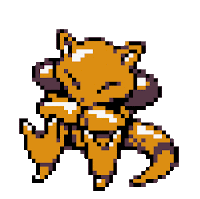Anybody else has felt that disphoria, when you roll up an encounter and it's just bears? I was expecting a beast; and the weird thing that a bear is actually a dreadful beast! But it falls flat. Why a bear when we got an owlbear? And, doesnt an eagle stop being an eagle (symbol of power, king of the birds) when it shares world with rocs and phoenixes?
There is no distinction in many bestiaries between real life animals and monsters: they are all listed the same, alphabetically, each with their HD and stats. But I think that in many cases they are redundant. It might only be my view on this, but let me tell you something I have slowly injected in my games:
There are no two versions of animals: wolves and direwolves. Eagles and dire eagles. Bees and Killer bees. Only one of the versions is allowed, the one that is more interesting (usually the big or magical one). I am a D&D naturalistic and I spend more time than you would guess imagining the ecology and habits of imaginary beings. On the flipside, I realized that I should not only take monsters "down to earth", but also I should make normal animals become more hyped, more "monster" if you like, in order to have a place in a D&D hexmap. Here are some examples:
Honey is distilled from killer bees. This makes it very valuable and dangerous to produce, much more when you remember that BX RAW the honey at the core of a hive works as a healing potion.
If the hive is set on a city, an accident or an attack can provoke chaos amongst the populace; though releasing the bees during an attack can also be an interesting tactic.
Hives can be wisely situated outside the cities, but this comes with it's own set of problems: being exposed to bandits, raiding parties and monsters is the first. Farmers must adapt by finding hidden havens or finding another defence strategy. The poison of killer bees is also usable through bladed or piercing weapons.
The standard size of wolves is larger than the normal one (see pic above, compared to a Trow and a Kobold), because they are more terrific that way; and I can fit 5 HP on them (on my monster conversions, normal wolves had 4 and direwolves had 6). The same problem happens with lions and tigers, when you have sabertooth tigers living a few hexes apart: There is no place for both: the existance of one makes the other lose its meaning. The concept of a lion falls apart in the moment in which an adventure finds one and says "at least is not a sabertooth tiger!!"
But what about blink dogs? RAW they have as much life and better armor than a dire wolf, just a little less average damage. Thats before we count their blinking ability in. Very tough for something that looks just like a greyhound!
Though I love blink dogs (and greyhounds) too much, I must confess that I have never achieved an interesting encounter with them. They hardly provide combat, roleplaying opportunities, not any help, despite their "lawful" nature. I have thought many times on the domestication of the blink dog. Could it be helpful? well, if a kobold could ride it and blink out of existance with it, sure. The rules are not very clear about it. But how hard would be living in a castle with the dogs blinking constantly in and out of the kitchen?
Thought its a very interesting idea to explore, I have settled giving them the traditional role of coyotes, jackals and foxes: the wild canines that, to put it in terms we all understand, chose to be rogues instead of fighters. They are highly intelligent and show great empathy, but they are not available as pets for the populace. They can be used, however, as animal companion, which in my rules is available for people with high charisma, though the animal must be feasibly befriended. This introduces more ways in which blink dogs can interact with the party: evil wizards can send them to steal your magic items and blink away; or you can get a very dope ally. As a note, I'd like to point that the pokemon Abra is a blinking fox. Coincidence? I don't think so.
Now that we are talking about dogs; what about domestic dogs? There are few greater contrasts in D&D as between the lack of rules on their use, and the obsession of the average gaming group on using dogs (in my experience, obv). On one side, giving dogs very good bonuses on their scent and tracking abilities could be a little OP. On the other, making them meat shields at best has little flavor and doesn't paint the essence of a dog. Following the precept of "naturalizing" monsters and "monsterifying" common animals, I think that leaning on the buff-dog is the correct answer, with different power ups depending on breeds (More on this on the upcoming entry: BESTIARY) while implying that the dog breeds in the game world are also limited and not corresponding to real life current age.
In my campaign, the only crocodiles are giant crocodiles. All bears are owlbears. Monkey's intelligence is accentuated, so it can be exploited.
Ravens are a widespread communication method, and is easy to teach them words. Falcons are used to hunt, but also can be trained to kill messenger ravens. Stirges are my world's mosquitoes. Eagles don't exist, only rocs of different size. As an exception, I use spiders and snakes of all sizes, because I find uses for both.



No comments:
Post a Comment